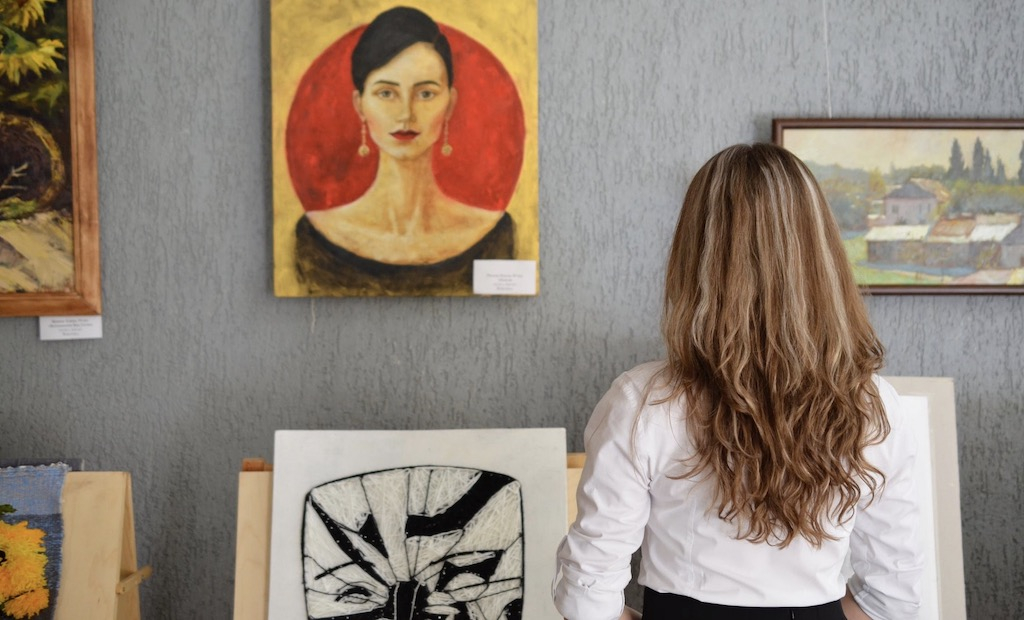The differences between naturalistic and abstract art

This article investigates the different ways that artists choose to express themselves through their work. Starting with a very simple definition of the differences between these two dominant artforms: naturalistic and abstract.
A naturalistic piece aims to depict an existing subject, often as precisely as possible. This could be a person, an object, a landscape, or anything else that the artist desires to capture. Abstract artwork, however, is non-figurative, meaning it has no recognisable subject. Click on the link to Eden Gallery here for a more in-depth abstract art definition, to better understand what makes an abstract piece so different from a naturalistic one.
Naturalism – representational versus non-representation
Some pieces of naturalistic art are easily defined as such: Leonardo da Vinci’s Mona Lisa, for example. This painting bears a strong resemblance to the “real world” as it was at the time. This makes Mona Lisa a highly representational piece.
Now let’s take a look at a non-representational piece like Hakuin Ekaku’s portrait of Daruma. Ekaku was a Japanese Zen Buddhist monk who rejected naturalism. The concept of abstract art had not yet been defined at the time of its creation, so some people today might argue that this piece is a work of abstract art. This is because there is no visual picture or attempt to represent the “real world” – one may also refer to this as a caricature today.
Mona Lisa renders many details in exquisite, realistic detail. Hairs are rendered individually, her features are distinct and recognisable. Indeed, the debate still rages to this day about just why the Mona Lisa looks the way it does but there is no disagreement about the type of art represented by this painting. The highest degree of naturalism is referred to as verism, and this is a category of art to which only these pieces can belong.
Moving towards abstraction – form vs function
Whilst Ekaku’s portrait of Daruma is instantly recognisable as being a human face, each element has been rendered in a somewhat abstract manner. Paintings such as this could well be said to be the basis for modern abstract art, as they ignore elements of the natural world.
By deviating from the image he could see before him, some would suggest the artist is attempting to simplify the piece. Others question if he deliberately altered the image for effect, to express some traits of Daruma that have perhaps been lost to time.
What is important is that those viewing this piece understand such changes do not automatically make this portrait a lesser work of art. By the same notion, Ekaku was not necessarily a lesser skilled artist than Da Vinci, either.
The clear difference between these pieces indicates a deliberate desire to be unique; the less realistic style was probably intended to convey different goals to what Da Vinci was trying to achieve with his famous painting.
In fact, Daruma died over a thousand years before this depiction of him was even created. The artist’s emphasis was not to present an accurate recreation of the Buddhist’s literal appearance but of his wisdom. This is demonstrated by his vast forehead and oversized, upturned eyes.
Purely abstract art
In recent times, art has moved onto entirely non-representational pieces and non-objective artworks are now common. In these pieces, there is little or no attempt to reference the natural world. Piet Mondrian is known for being one of the pioneers of 20th century abstract art.
Finding his early landscapes to be uninspiring and outdated, he gradually slid further and further away from what was regarded as being “art” at the time, eventually creating pieces that resembled randomly drawn grids of multi-coloured shapes.
Some have claimed that he was inspired by Picasso as his Cubist style began to appear immediately after he visited Paris in 1911-1914. The artist’s impressionistic pieces are now some of the most prized in the world and many can be found adorning the walls of the Tate Modern in London.
The editorial unit

























Facebook
Twitter
Instagram
YouTube
RSS